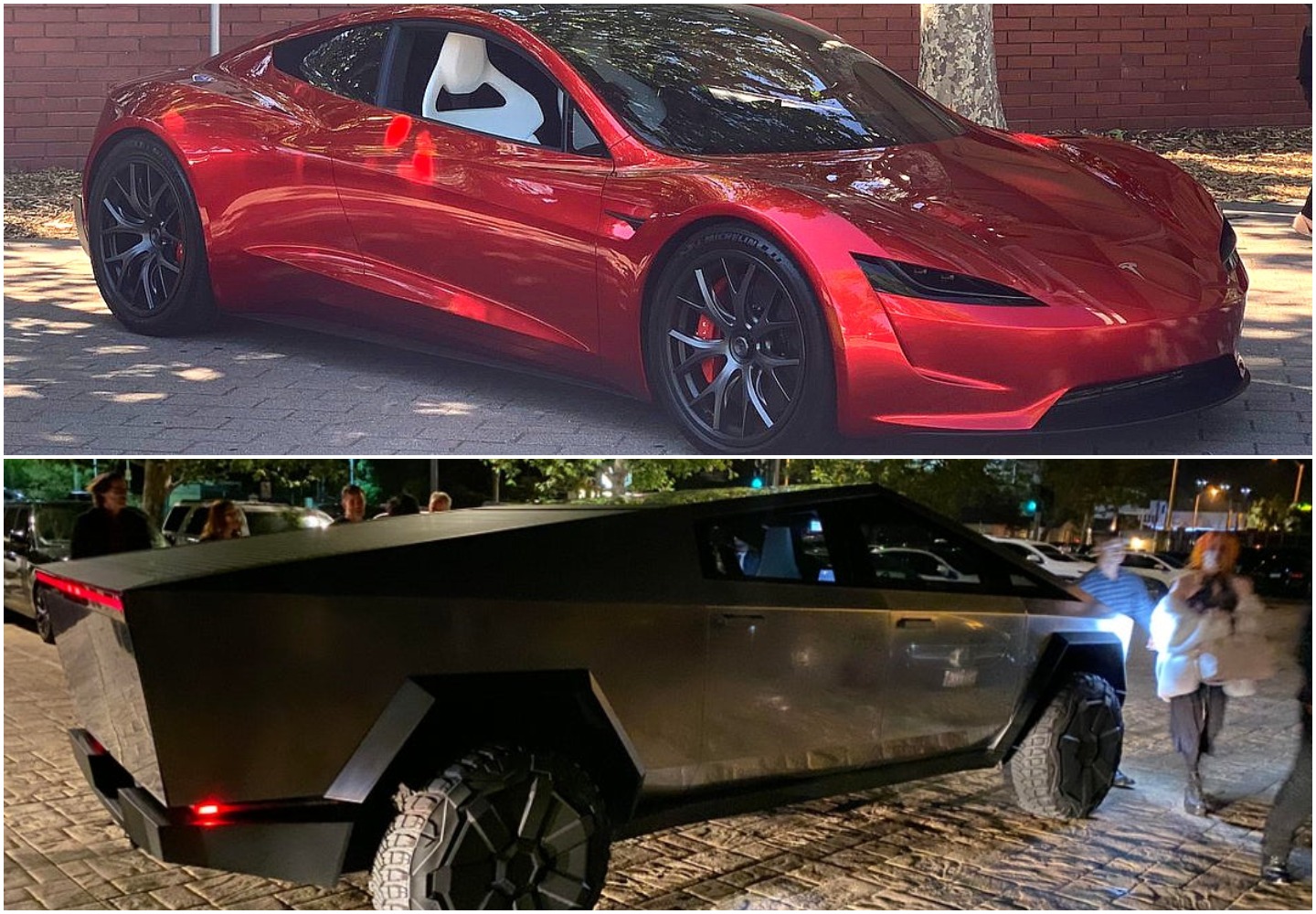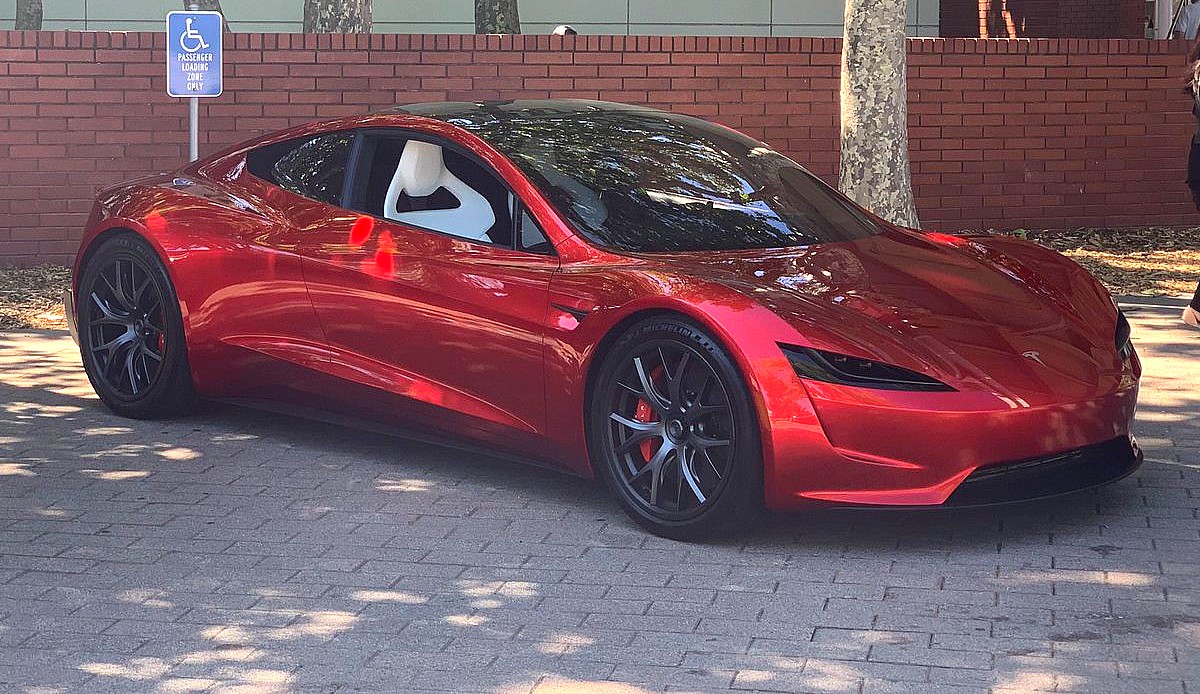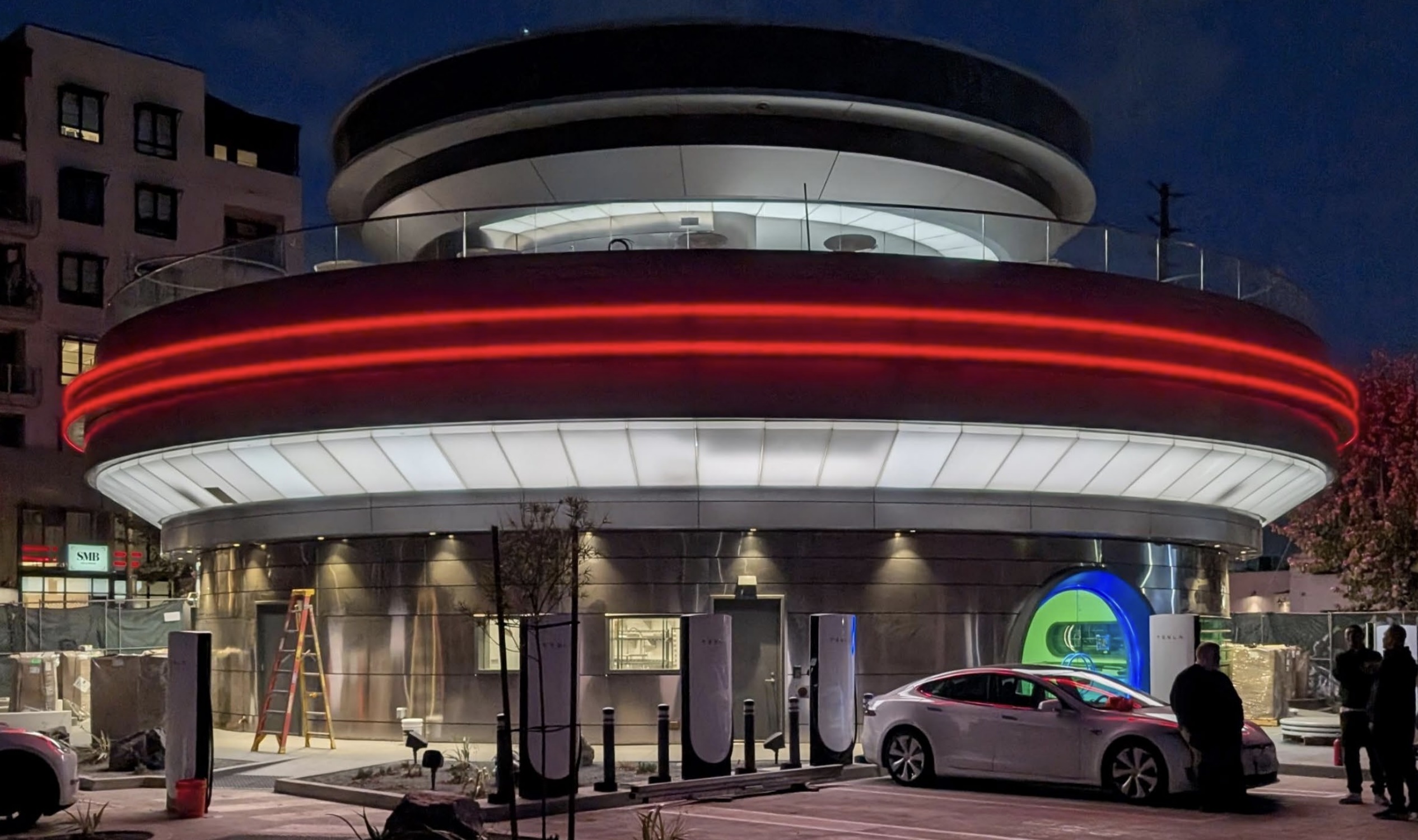

News
Tesla’s no-side-mirror approach becomes feasible as NHTSA ponders camera-based systems
When Tesla unveiled the next-generation Roadster and the Cybertruck to the world, the two vehicles immediately shocked the automotive industry. The Roadster stunned because of its insane specs, and the Cybertruck shocked because of its unorthodox design that is unlike any other pickup truck on the market. However, the two vehicles also share something very unique: they both lack side mirrors.
Federal Motor Vehicle Safety Standard No. 111, titled “Rear Visibility,” requires all vehicles to “be equipped with rearview mirrors to provide drivers with a view of objects that are to their side or their side and rear.” However, the NHTSA recently hinted that “light vehicles and heavy trucks” may eventually be equipped with camera systems instead of traditional side mirrors.
An edition of the United States government’s Federal Register from late 2019 shows the National Highway Transportation Safety Administration sought more information on the possibility of vehicles utilizing a “Camera Monitor System,” or CMS. The removal of mirrors instead of camera systems would eliminate the need for traditional side mirrors and possibly rearview mirrors, too.

Tesla’s absence of side mirrors started back in 2013 with the unveiling of the Model X. After wrestling with the idea of a side-mirrorless SUV to increase aerodynamic performance, CEO Elon Musk stated that manufacturers were required to install side mirrors on vehicles. A side mirror-less design actually benefits electric cars like Teslas, since side mirrors increase drag, reducing range. This was done by Audi with the e-tron, with the vehicle being offered with a side mirror-less trim that is slightly more efficient.
The Cybertruck’s side mirrors were absent during its unveiling event in November 2019. Instead of regular mirrors, Tesla had equipped the vehicle with Autopilot cameras that are in the truck’s front fender. Many enthusiasts of the electric carmaker speculated that this was a design that wouldn’t enter production as regulations still existed that required side mirrors.
To determine the effectiveness of camera systems instead of traditional mirrors, the NHTSA conducted its research and testing. The organization also examined testing performed by other parties. The CMS noted that during a trial period from 2006 to 2011, NHTSA research showed that several safety concerns arose from the use of cameras instead of mirrors. These stemmed from glares when sunlight touched the cameras. However, the German Federal Highway Research Institute published a separate study that showed the CMS meets “specific quality criteria” and can provide “sufficient” rear visibility for drivers.

So the question is: What has changed in the nine years since the study concluded? For one, cameras have gotten significantly better. What was once a quality piece of photography equipment can be found on the back of an iPhone. High-resolution pictures and videos are not uncommon, and it is not rare for even extremely affordable cameras to provide better quality images than what was available in 2011.
To determine an accurate and fair assessment of the CMS, a new study should be performed using the 2020 technology. The use of rearview backup cameras is a standard feature on most vehicles today. While such systems are used mostly when backing into a parking spot, it is still relevant, and it shows that the widely adopted technology can be used in an effective and safe manner. This feature could be expanded on, and mirrors could be removed from vehicles if the proper research was performed and quality cameras were placed on a vehicle’s exterior.
Tesla has hinted at mirrorless driving in the past, and the door is open now more than ever. It seems this system could be integrated into performance vehicles like the Roadster, or pickups like the Cybertruck in the future. The designs of these two all-electric vehicles have hinted towards a future that does not include traditional side mirrors, which could change the way other carmakers design vehicles as a whole. Tesla’s minimalistic interior and large centrally-located dash screen has been adopted by many other carmakers, showing the electric car company influences other automakers in the industry. A side-mirror-less theme may be the next big trend that Tesla starts.

News
Tesla Diner to transition to full-service restaurant as Chef heads for new venture
“I am leaving the Tesla Diner project to focus on the opening of Mish, my long-desired Jewish deli. Projects like Mish and the Tesla Diner require a sharpness of focus and attention, and my focus and attention is now squarely on Mish.”

Tesla Diner, the all-in-one Supercharging and dining experience located in Los Angeles, will transition to a full-service restaurant in January, staff said, as Chef Eric Greenspan said he would take on a new project.
A report from the Los Angeles Times says Greenspan confirmed through a text that he would leave the Diner and focus on the opening of his new Jewish deli, Mish.
Greenspan confirmed to the paper:
“I am leaving the Tesla Diner project to focus on the opening of Mish, my long-desired Jewish deli. Projects like Mish and the Tesla Diner require a sharpness of focus and attention, and my focus and attention is now squarely on Mish.”
Greenspan took on the job at the Tesla Diner and curated the menu back in March, focusing on locally-sourced ingredients and items that would play on various company products, like Cybertruck-shaped boxes that hold burgers.
Tesla Cybertruck leftovers are the main course at the Supercharger Diner
The Tesla Diner has operated as somewhat of a self-serve establishment, where Tesla owners can order directly from their vehicles through the center touchscreen. It was not exclusive to Tesla owners. Guests could also enter and order at a counter, and pick up their food, before sitting at a booth or table.
However, the report indicates Tesla is planning to push it toward a sit-down restaurant, full of waiters, waitresses, and servers, all of which will come to a table after you are seated, take your order, and serve your food.
It will be more of a full-featured restaurant experience moving forward, which is an interesting move from the company, but it also sounds as if it could be testing for an expansion.
We know that Tesla is already considering expanding locations, as it will be heading to new areas of the country. CEO Elon Musk has said that Tesla will be considering locations in Palo Alto near the company’s Engineering HQ, and in Austin, where its HQ and Gigafactory Texas are located.
Musk said that the Diner has been very successful in its first few months of operation.
News
Tesla adds new surprising fee to Robotaxi program
“Additional cleaning was required for the vehicle after your trip. A fee has been added to your final cost to cover this service. Please contact us if you have any questions.”

Tesla has added a new and somewhat surprising fee to the Robotaxi program. It’s only surprising because it was never there before.
Tesla shocked everyone when it launched its Robotaxi platform and offered riders the opportunity to tip, only to tell them they do not accept tips. It was one of the company’s attempts at being humorous as it rolled out its driverless platform to people in Austin.
As it has expanded to new cities and been opened to more people, as it was yesterday to iOS users, Tesla has had to tweak some of the minor details of the Robotaxi and ride-hailing platforms it operates.
First Look at Tesla’s Robotaxi App: features, design, and more
With more riders, more vehicles, and more operational jurisdictions, the company has to adjust as things become busier.
Now, it is adjusting the platform by adding “Cleaning Fees” to the Robotaxi platform, but it seems it is only charged if the vehicle requires some additional attention after your ride.
The app will communicate with the rider with the following message (via Not a Tesla App):
“Additional cleaning was required for the vehicle after your trip. A fee has been added to your final cost to cover this service. Please contact us if you have any questions.”
The cost of the cleaning will likely depend on how severe the mess is. If you spill a soda, it will likely cost less than if you lose your lunch in the back of the car because you had a few too many drinks.
This is an expected change, and it seems to be one that is needed, especially considering Tesla is operating a small-scale ride-hailing service at the current time. As it expands to more states and cities and eventually is available everywhere, there will be more situations that will arise.
The messes in vehicles are not a new situation, especially in a rideshare setting. It will be interesting to see if Tesla will enable other fees, like ones for riders who request a ride and do not show up for it.
News
Tesla Model Y sold out in China for 2025
Customers who wish to get their cars by the end of the year would likely need to get an inventory unit.

It appears that the Model Y has been sold out for 2025 in China. This seems to be true for the four variants of the vehicle that are currently offered in the country.
Tesla China’s order page update
A look at Tesla China’s order page for the Model Y shows a message informing customers that those who wish to guarantee delivery by the end of the year should purchase an inventory unit. This was despite the Model Y RWD and Model Y L showing an estimated delivery timeline of 4-8 weeks, and the Model Y Long Range RWD and Model Y Long Range AWD showing 4-13 weeks.
As per industry watchers, these updates on the Model Y’s order page suggest that Tesla China’s sales capacity for the remainder of 2025 has been sold out. The fact that estimated delivery timeframes for the Model Y Long Range RWD and AWD extend up to 13 weeks also bodes well for demand for the vehicle, especially given strong rivals like the Xiaomi YU7, which undercuts the Model Y in price.
Tesla China’s upcoming big updates
What is quite interesting is that Tesla China is still competing in the country with one hand partly tied behind its back. So far, Tesla has only been able to secure partial approval for its flagship self-driving software, FSD, in China. This has resulted in V14 not being rolled out to the country yet. Despite this, Tesla China’s “Autopilot automatic assisted driving on urban roads,” as the system is called locally, has earned positive reviews from users.
As per Elon Musk during the 2025 Annual Shareholder Meeting, however, Tesla is expecting to secure full approval for FSD in China in early 2026. “We have partial approval in China, and we hopefully will have full approval in China around February or March or so. That’s what they’ve told us,” Musk said.








